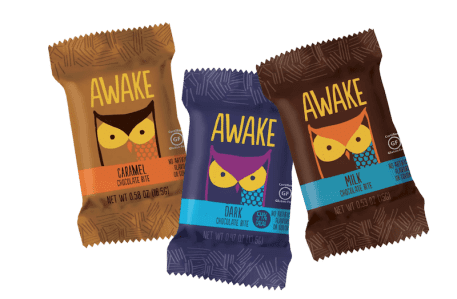D2C Chocolate Brand Awake Builds eCommerce Sales From in-Store Placements

While many emerging brands start out direct-to-consumer (D2C), given the lower barrier of entry to the channel, and then use their eCommerce popularity to sell their product to retailers, caffeinated chocolate brand Awake went the other way, using its retail placement to build a following for its D2C business.
“Our store distribution has actually helped us build a B2C business rather than the other way around,” Awake Chocolate founder and CEO Adam Deremo told PYMNTS in an interview. “And we’ve validated that a good percentage of people who come to our site and buy — we know this from interviews — first discovered our product in a store somewhere.”
He added that the brand’s surveys reveal that between 50% to 65% of its eCommerce following discovered the product in this way. The company’s three co-founders came from PepsiCo, forming the brand in 2012, such that “b2b brick-and-mortar distribution and brand-building” was where their expertise lay. Indeed, the brand is in 20,000 stores in North America including Walmart, Meijer and others.
 Deremo added that, for the “first five years” of the business, the company “didn’t pay attention to” the D2C channel until they onboarded new employees “right out of school” who argued for the value of the channel.
Deremo added that, for the “first five years” of the business, the company “didn’t pay attention to” the D2C channel until they onboarded new employees “right out of school” who argued for the value of the channel.
“We were at risk of becoming obsolete,” he said. “For an innovative new brand, it’s kind of weird not to be adopting leading edge channels.”
While the brand’s D2C business has now been around since the latter part of the 2010s, the last two years have seen retention increase significantly. The company now notes that 42% of new eCommerce customers will purchase again, and customers buy 100 caffeinated chocolate bites at a time on average, a $70+ value.
Certainly, a significant share of consumers is looking to get their food and beverage needs met via digital channels.
Data from the July edition of PYMNTS’ ConnectedEconomy™ series, “The ConnectedEconomy™ Monthly Report: The Rise of the Smart Home,” which drew from a May survey of more than 2,600 United States consumers, found that 40% order groceries online for home delivery every month, and more than half of those consumers do so once a week or more.
Get the study: The Rise of the Smart Home
Given that food products rely on regular consumption and repeat purchases, a subscription model can be an effective way to drive repeat purchases. That said, Awake only “started focusing on [subscriptions] this year” after an employee made the case — that consumers want to receive the product on a regular basis and that the model would in turn drive loyalty and long-term value.
“We’ve actually grown our subscriber group almost 3X this year,” Deremo said. “That said, we were starting from a really low place, but I’m quite encouraged at how that’s going.”
Indeed, purchasing food and beverages via subscription is on the rise. Research from the recent PYMNTS study “How The World Does Digital: The Impact Of Payments On Digital Transformation,” which draws from surveys of census-balanced panels of more than 15,000 consumers across 11 key economies, finds that usage of grocery subscription services jumped 8% between Q1 2022 and Q2 2022.
Related: Study Finds Digital Engagement of Consumers Worldwide Jumped 1.2% in Q2
For all PYMNTS retail coverage, subscribe to the daily Retail Newsletter.
